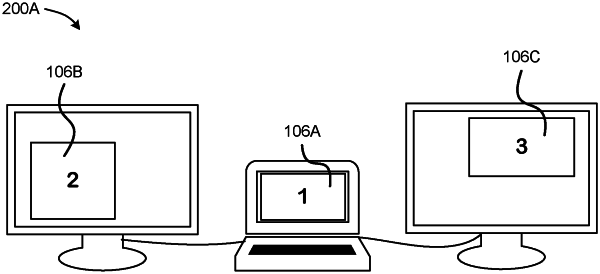| CPC G06F 9/451 (2018.02) | 20 Claims |

|
1. A method for managing a user interface object displayed by a computing device, the method comprising:
detecting a specific number of display devices in a hosting environment of the computing device, wherein the hosting environment provides a graphical user interface (GUI) and is characterized by a display device topology and an attribute of one or more of the display devices;
from a plurality of hosting environment profiles each including parameters specifying specific numbers of display devices and a display attribute, selecting a hosting environment profile based on comparison of a specific number of display devices specified in the hosting environment profile to the specific number of display devices in the hosting environment;
identifying historical configuration data linked to the hosting environment profile, the historical configuration data specifying a state of the user interface object associated with a previous manipulation of the user interface object by a user, the state defining at least in part how the user interface object is to be rendered in the GUI;
determining an additional rule is applicable to the state of the user interface object, wherein the additional rule is separate from the plurality of hosting environment profiles; and
configuring an appearance of the user interface object to be rendered in the GUI based on the state of the user interface object specified by the historical configuration data and the additional rule.
|